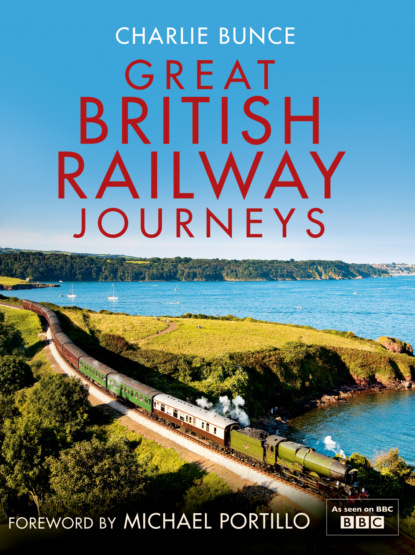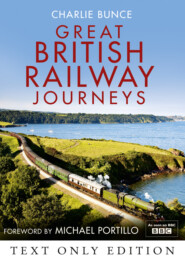По всем вопросам обращайтесь на: info@litportal.ru
(©) 2003-2024.
✖
Great British Railway Journeys
Автор
Год написания книги
2019
Настройки чтения
Размер шрифта
Высота строк
Поля
Totnes is returning to the values of a previous era with its new green economy in action.
Francis Frith Collection/Photolibrary
Reading our Bradshaw, it occasionally seemed as though little had changed in 170 years. The book found us hotels, told us what to see, even gave tips for our journey. It was Bradshaw who highlighted that we’d need to take the ferry to cross to Dartmouth because there was no bridge there over the Dart. For nearby Totnes, though, change has certainly come.
Bradshaw was clearly not particularly impressed with Totnes. The book gives the town scant mention. It lists the population as 4,001, suggests one hotel, The Seven Stars, and tells us that, because the town is situated on the River Dart, most people are employed in the fishery. It’s a very different place today, with double the population in the Totnes parish alone and a radical outlook.
Totnes is part of a global campaign for sustainability called Transition Towns. It was started there by Rob Hopkins in 2006 as a reaction to climate change and the challenge posed by the age of cheap oil nearing its end. Rob’s idea was to treat this as an opportunity rather than a crisis, and in Totnes it seems to be working. One of the key elements is a garden share scheme, which Rob described as being like a dating agency. To reduce the distance food is transported they have a land swap system, putting people who want to grow their own food in touch with people who have spare bits of land they could use.
Totnes also has its own local currency, which can be spent in over 80 shops there. Rob likened Totnes to a leaky bucket, with money coming in and then pouring out again. Of every £1 you spent in a supermarket, 80p was out of Totnes by the next day. But this currency, which you obtain in exchange for cash at one of the local businesses participating in the scheme, can’t go anywhere else – it encourages you to spend your money locally and support the town’s economy.
Rob’s tips for creating your own Transition Town start with finding a few reliable like-minded people to form a steering group. Before your official launch, arrange a few thought-provoking events, so people understand what the issues and aims are. If you can create a groundswell of people fired up on the key issues, you’re much more likely to be successful as you move forward. The extraordinary thing is that what started in a small way in Totnes is now being used by thousands of towns, cities and villages around the world.
From Totnes the line skirts the southern edge of Dartmoor and then, after crossing the Tamar at Saltash on Brunel’s enormous Royal Albert Bridge (his last great achievement, completed in 1859, the year he died), you are in Cornwall. We carried on west through St Germans, and shortly before St Austell we stopped at a small town called Par, which Bradshaw described as ‘a mining town in west Cornwall near the sea with several important mines round it in the granite producing copper, nickel, with clay, and china stone for the Staffordshire potteries’. In fact, Par was an important hub for the huge industry fed by the biggest china clay deposits in the world. For almost 100 years clay used in the Potteries for making porcelain was shipped northwards by sea and canal. In the 1840s the railways took over, and soon it was being ferried on a network of lines that criss-crossed the county.
Вы ознакомились с фрагментом книги.
Приобретайте полный текст книги у нашего партнера:
Приобретайте полный текст книги у нашего партнера:






